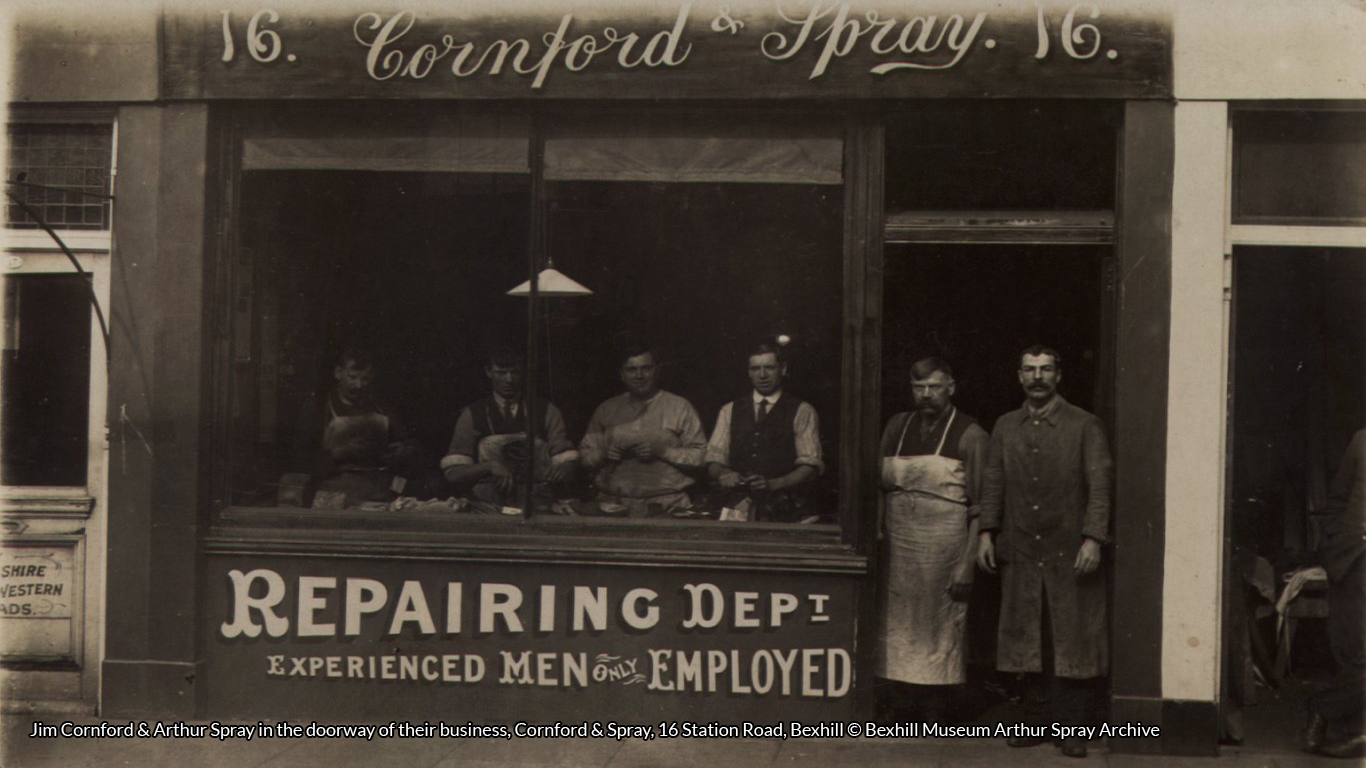Here, Julian Porter — curator of the Bexhill Museum — summarises a book written by Arthur Spray, The Mysterious Cobbler of Bexhill. The book explores Arthur’s life story, and his strange experience of being blessed with natural magnetic powers which led to him gaining an amazing reputation as a folk healer throughout the Sussex community.
The Mysterious Cobbler of Bexhill, Arthur Trebnall Spray (21.5.1890–24.2.1961) was reputed to have healing powers. His book, The Mysterious Cobbler, Being the Story of Arthur Spray of Bexhill who has natural magnetic powers told by himself, was published in February 1935, by The Francis Mott Company, London.
Publisher’s Preface
In the publisher’s preface, we are told that the publisher, Francis Mott, met the author four years previously, and was left with a positive impression. He states his opinion of the author quite clearly,
Arthur Spray makes no pretences. That is why I like him. He does not pretend to possess knowledge. He merely does things and leaves the explanations to others.
The preface makes clear that the Sunday Dispatch newspaper has already serialised the book. It mentions that Arthur Spray and his partner Alice demonstrated their uncanny abilities at the newspaper offices at Northcliffe House on 3rd January, 1935.

Author’s Foreword
Here Arthur tells the reader about the clients that have sought out his services over the years:
I have had important doctors, scientists, millionaires and titled people in my little shop.
And he takes the opportunity to state his approach to his powers:
I am not a Spiritualist, nor am I a yogi. I am just a shoemaker.
At this point, his address is confirmed as 16 Station Road, Bexhill-on-Sea, Sussex.
Chapter 1, Plain Me
This chapter tells us that Arthur was born in The Black House at Sprays Cottages, Sidley, Bexhill-on-Sea, Sussex in 1889. He was the thirteenth child of a poor family, whose father died when he was just thirteen months old. Arthur started work at the tender age of seven, left school at twelve, and married at nineteen. While Arthur doesn’t talk about the Great War beyond saying it was “painful beyond words”, he does mention that he was in the navy. His first experience of healing came after the war while acting as a district visitor for a slate club, taking money to the sick. One old man just wanted to hold Arthur’s hands, which eventually annoyed Arthur. When challenged, the old man explained that Arthur had healing hands, and this was the reason for his attentions. Arthur also recounts healing a young woman of sea-sickness and a headache while on a boat trip. On one occasion, Arthur meets with his friend Harry, who tells him about hypnotism, which Arthur airs his doubts about. Later, while visiting two ladies, one has a headache and, knowing Arthur’s tale of the sea-sick girl, asks him for healing. Rather than just taking the pain away, Arthur also puts her into a deep sleep, and has to fetch Harry to show him how to bring her back.
Chapter 2, How I Do It
Arthur states:
So far as I differ from the average man, is that I have a terrible power of concentration.
He says that he has to take care not to “fix people too much with my eyes”, or they might fall asleep. It even affects his family life:
Many of my family think that I am a freak, or a friend of the devil, and so raise a barrier between us… I am a long way from being a freak, I feel, and as for being a friend of the devil — well, I reckon I have done as much as most cobblers to put a spoke or two in that gentleman’s wheel.
Not so long ago I had the pleasure of meeting Dr Alexander Cannon… He gave me a copy of his book Powers That Be which explains much about the connection between concentration and hypnotism, but I have never been able to learn anything from books.
Arthur tells of an old cure for warts by concentrating on a stone and leaving it on a gate, with the belief that when it is knocked off the wall, the wart will be removed. He cites this as an example of self-hypnotism.
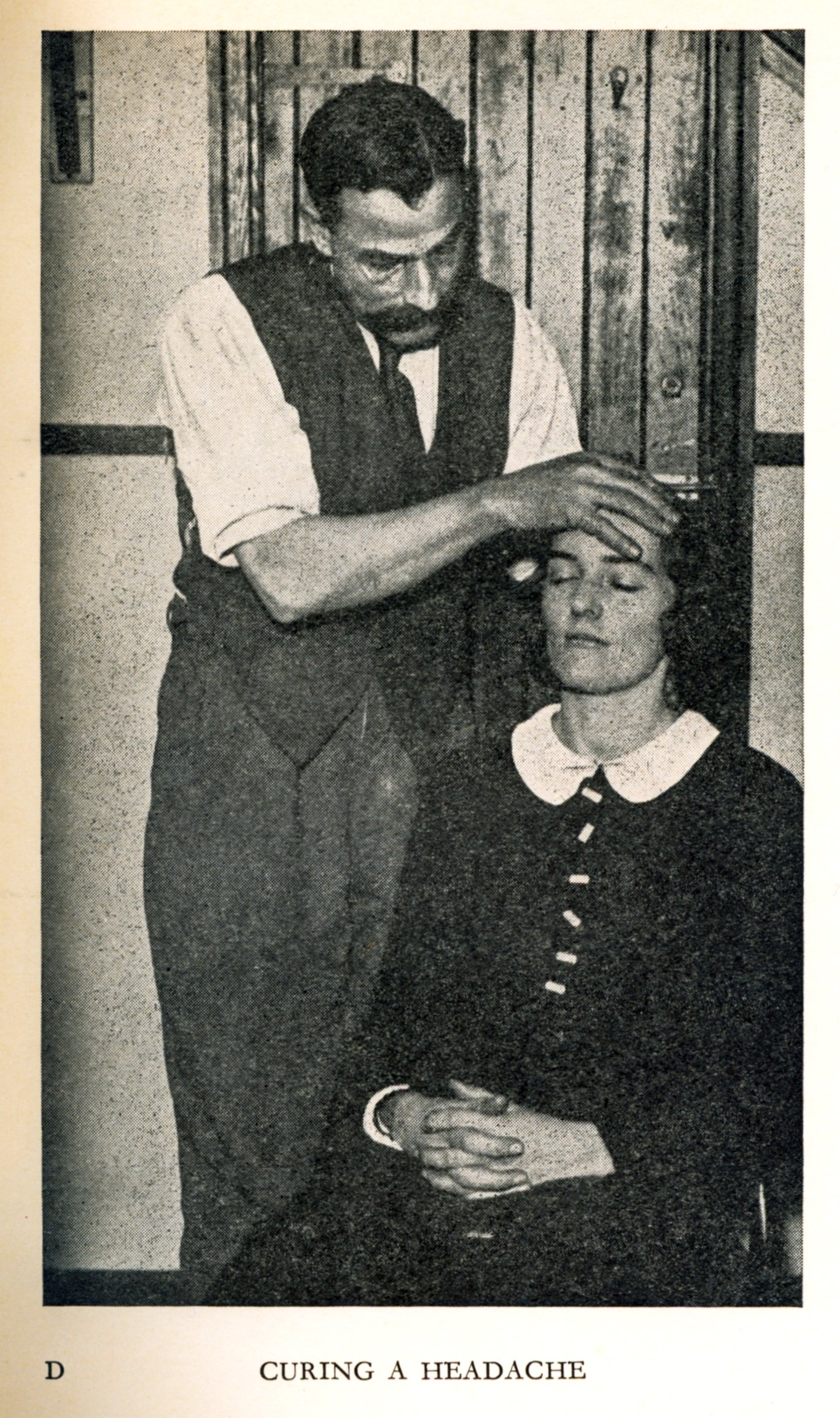
Chapter 3, Things Begin to Happen
The Mysterious Cobbler’s fame has spread by this point, and Arthur has built an attic room for consultations. He states that although he had previously not taken any payment for the use of his gifts, he is now accepting donations for his services in order to make ends meet. Arthur describes healing neuritis, problems with sleep, bilious headaches, neurasthenia, and failing eyesight. He uses his “hot” breath and “cold” breath as well as his hands. He tells us:
I am not a religious man in the ordinary sense… I always say my power comes from God.
He likens God to a huge wireless broadcasting station in a universe of vibrations of thought. Two young women come to collect some shoes from the cobbler, and one has a terrible headache. When not revived by a cup of tea, she reluctantly agrees to try Arthur’s healing touch. Uric acid crystallised on his fingers as he worked, and she was healed. She demanded to know if he had hypnotised her. When he confessed that he had, rather than being angry she was delighted, and said that she would return next week. This woman was his future partner Alice; and:
thus began a psychic partnership which has produced the spontaneous marvels which are related in the chapters to come.
Chapter 4, Alice
Alice remains an elusive character; Arthur says that she was in service, and had come to Bexhill to die.
When she came to me she had been given three months to live, that was seven years ago.
Alice appears to absorb illness from others, with Arthur stating:
Alice is like a sensitive wireless set, picking up vibrations from other people.
Arthur’s abilities were to hypnotise and heal, but with Alice as his willing assistant, the range of their experiences and adventures greatly increased. Arthur says:
I am an absolute woodenhead. That is to say, I never see anything unusual, feel anything out of the ordinary, or hear anything – except through Alice.
Alice makes diagnoses and directs the healing process while in a hypnotic trance, and knows medical terms that were unfamiliar to her when awake. They discover that healing can be done remotely by using a photograph of the patient. The pair are sometimes assisted by motor mechanic Harry Wall. Arthur states that sometimes when Alice experienced pain transferred from a patient, Harry would feel it too, and Alice’s pain was diminished as if being shared. Harry is described as a “depth recorder” for Alice in trance. On one occasion, Harry saves Alice’s life after Arthur accidentally ‘fixed’ (stopped) her heart and lungs while distracted during filling a kettle to make them tea.
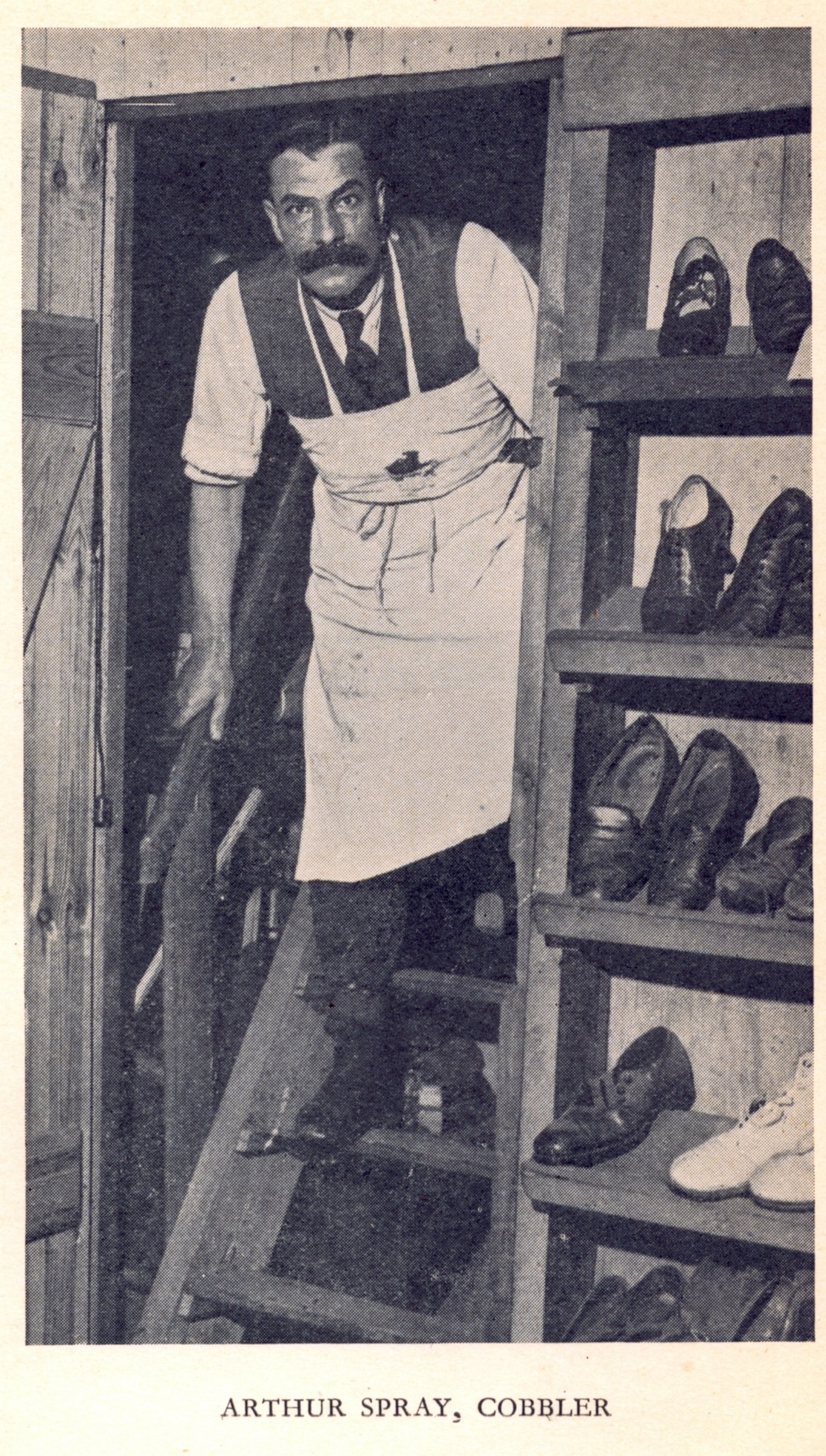
Chapter 5, Alice’s Adventures in Wonderland
Arthur reassures us that Alice is not under his power, and can resist his control when she wants to. When Alice was away on holiday and unable to sleep, she appears to Arthur as a vision. He sends her to sleep and is able to state when she will awake. The pair are asked by a woman to contact her dead husband; with Arthur refusing, stating: “We are not Spiritualists.” The woman attends with her brother and also two of Arthur’s colleagues, Sid and Len. The experience is traumatic, and afterwards Alice explains that the woman had gathered evil forces around her, and had made her late husband’s life miserable. Arthur later meets the woman in the street and rebukes her.
We are told that Alice was in service to an elderly widow, but was poorly paid. When alone in the house, Alice encountered a “ghost”, who she believed to be the departed husband. Arthur and a friend take Alice home after working late, but Alice refuses to go inside the house by herself. Alice locates the “ghost” and Arthur commands it to depart without asking any questions. Alice later discovers that her employer was secretly wealthy and berates Arthur for dismissing the “ghost” too soon, as it was attempting to tell her this information. Mrs Edey, who was concerned about her daughter in Australia, asked for help; she had sent her a money-order and had had no reply. Alice used her abilities to visit the daughter’s Australian home, finding the money-order in a teapot and confirming the serial number. She met the daughter in the garden with her children and reported that she was sick and unhappy, but would soon return to Bexhill. In 1934 the pair were contacted by someone whose friend had been poisoned, but Scotland Yard were unable to help find the culprit. The young lady — the beauty queen Miss Daphne Purton — was brought down to see them. Alice was able to find out who had been trying to poison her.
The pair are asked to help locate sunken treasure from the Spanish Armada. Alice ‘psychometrizes’ a broken dagger and draws a map showing the treasure, but Arthur feels that this isn’t an appropriate use of their powers, and they abandon these practices. We are told that Arthur and Alice treated a man called Leo Greenhill for rheumatism, but he became obsessed with being hypnotised. In trance he shouted in uncanny voices, and Alice had a strange urge to strangle Arthur. With Arthur as a tether, and assisted by Harry since Alice refused to participate, Leo was able to “travel the universe.” In a letter entitled “Leo Greenhill’s Journey” he describes being wafted around a mountainous valley on white clouds, then to a brilliant colour-filled space to meet a beautiful genderless entity before a glittering gate. Arthur concludes:
Greenhill was a man of good education, and one of the strangest men I have ever met. His document ends as abruptly as did his visits to us.
Chapter 6, Use and Misuse of Mind-Power
At the opening of the chapter, Arthur states:
My one prayer is that I shall never misuse my power. It is a wonderful gift.
Soon, Arthur finds himself at the Bexhill police station.
The local police-force at that time was not ignorant of my power, for I had taken headaches away from many policemen, and they treated me very sympathetically. One great hulking person present, however, did not seem to know how to hold his tongue, and he tried to bully and bluster, and seemed to have something up against me. I think it was my power did not fall in with his religious views.
Further provoked, Arthur “fixed” him to the spot and only released him, with a warning, twenty minutes later on his way out. Arthur later visited a theatre in Eastbourne and showed his contempt for stage hypnotists.
I was told by some of my pals that a hypnotist is appearing there, and calling people on stage where he hypnotizes them, and made them make fools of themselves. At the sound of this my blood boiled, for I did not think that these powers ought to be used on the stage simply to make money. So I decided to go and try and teach the gentleman a lesson.
Offering himself up as a volunteer, he hypnotised the stage hypnotist and then instructed him to wash his face with soot and eat potato peelings.
I told him to sit down. Then I turned to the audience, who thought I was part of the turn, and who had enjoyed it immensely, and gave them a little of the truth of the position. I said he had no business to use his power for such a purpose…
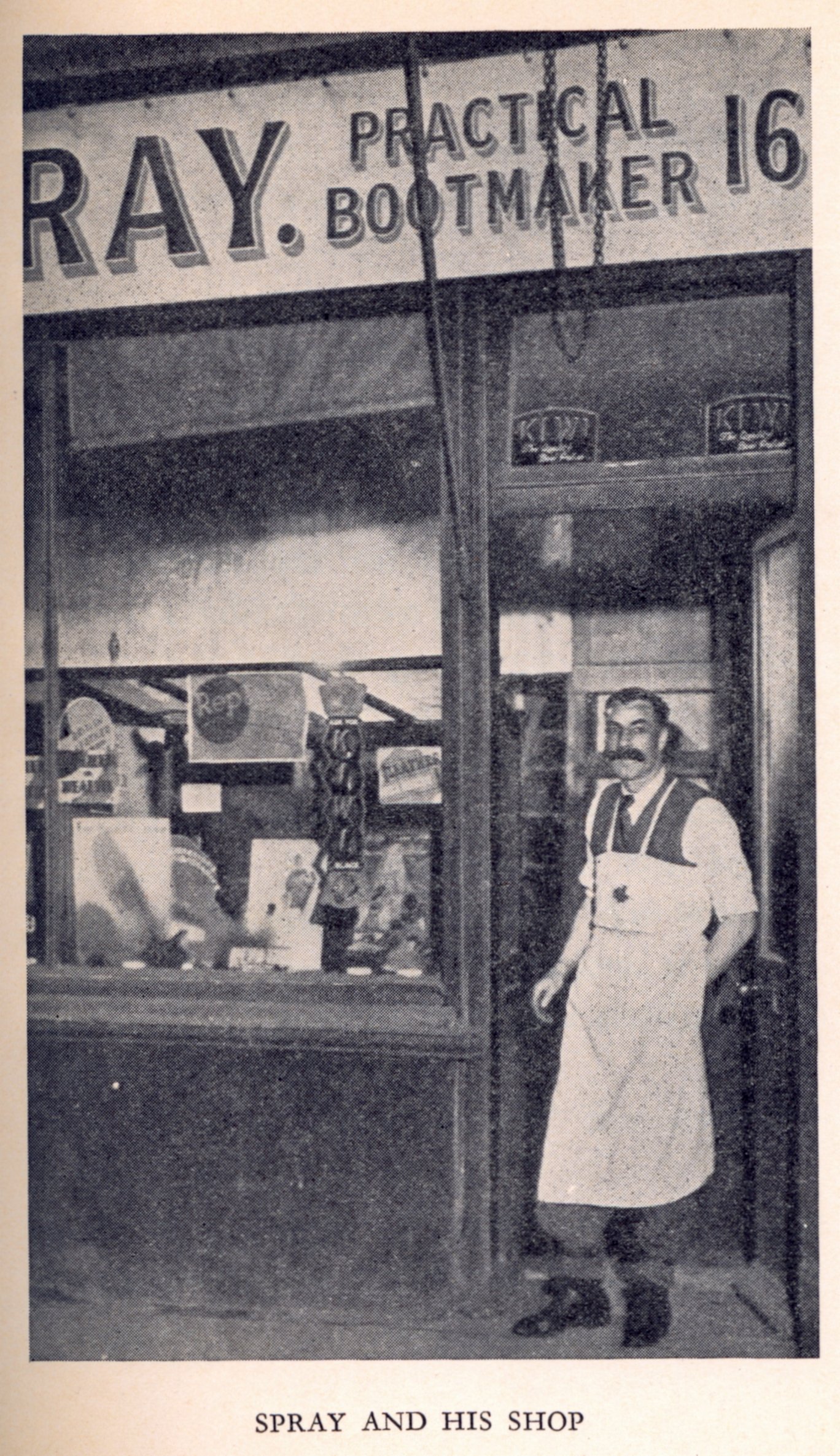
Chapter 7, Our Friends the Doctors
Ever since the beginning of my work I have had to fight the doctors. They have treated me as a quack, which, of course, I am from their point of view. They believe that a man is like a motor-car, and they are its mechanics.
One doctor did ask to watch Arthur work:
Well the doctor climbed up into my little bug-hutch, and wanted to see me “put the lad under,” he also watched me put Alice to sleep in a chair. He seemed to be very interested, especially when I told him that the power I had was a much better anaesthetic than anything he could find in his bag… He tested this by bending Alice’s fingers back, and also by sticking needles into her body without hurting her at all, or even drawing blood.
Another doctor witnessed Arthur controlling the heart rate of a subject named Bob, whom he then levitated up from the floor on his heels “like the handle of a rake would rise if someone stepped on the prongs.” The doctor intervened, and treatment was interrupted. Alice had diagnosed the problem as alcohol and Arthur’s powers had kept Bob out of pubs – without treatment, he relapsed. The last time they saw him he revealed in trance a vision of a “big figure eight”. Eight weeks later, Bob died.
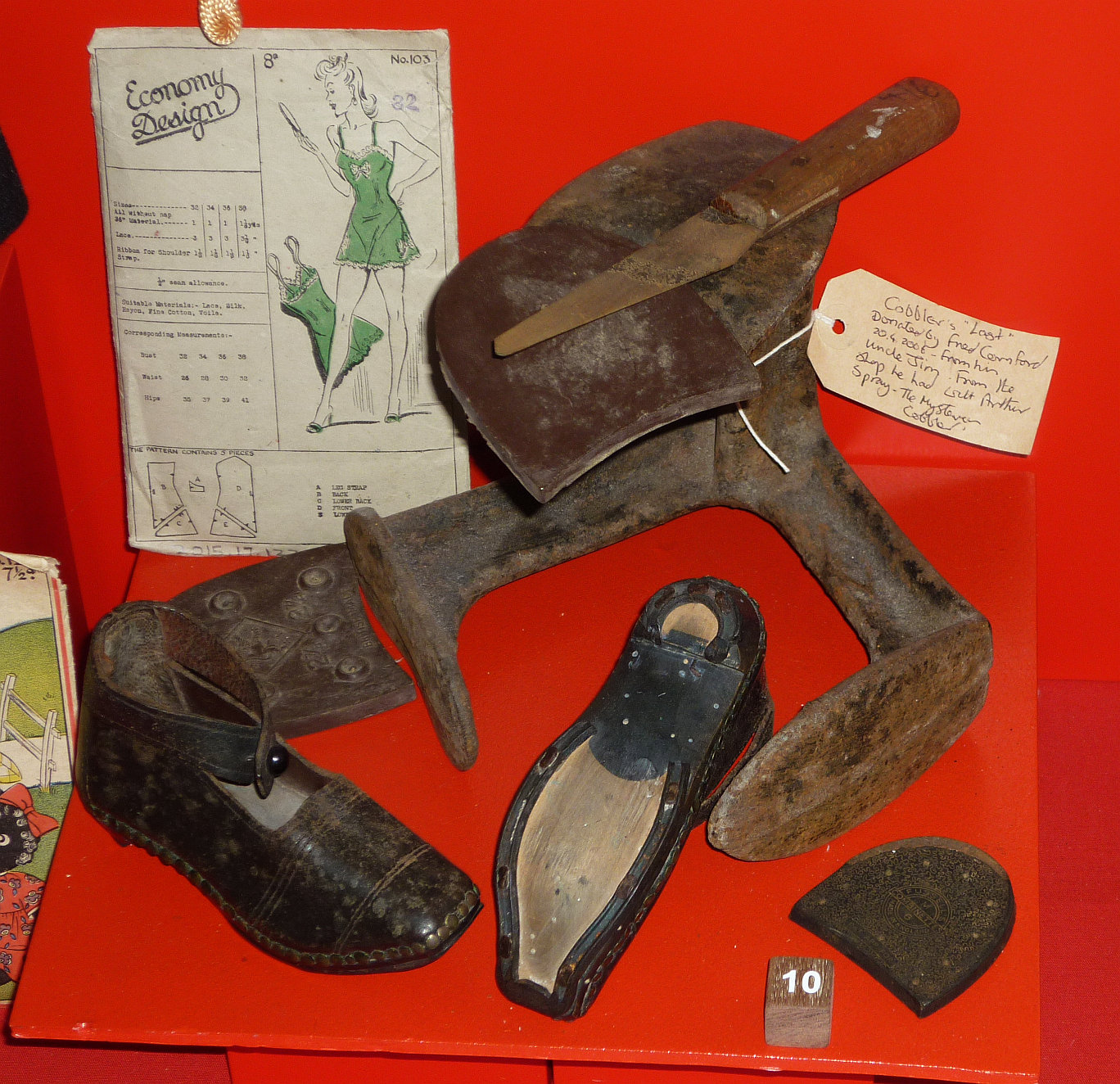
Chapter 8, Conclusion
This little book is a record of progress. It is not a claim, it is a statement of fact. I do not teach a theory or preach a religion… Why should I, who ten years ago knew nothing of these things, and who now know a little, suppose that to-day’s knowledge is more complete that it was then ten years ago? The power is like the lightning, for no one knows when it is coming, or where it will strike.
There then follows a dozen letters of testimony supporting Arthur’s healing powers.
The End
I have met people who knew Arthur Spray, some of whom have related their own experiences of healing by him. Alarmingly this has included Arthur’s ability to cure cataracts by licking them off! There are some other clues from an archive at Bexhill Museum. These are mostly letters asking for appointments for healing or reporting back, with results ranging from no improvement to miraculous cures. There are letters from Francis J. Mott, who visited Arthur in Bexhill in late 1934 and early 1935, and sent him proof copies of the book. One letter concludes “with kind regards to Daisy (Whom, by the way, I am calling “Alice” in the book).” This confirms that she did exist, but no surname is ever given so Alice/Daisy’s identity is unknown. There is also a letter from Dr Alexander Cannon to Arthur, dated 26.10.1935:
I wrote to our mutual friend Mr. Mott for Royalties but he has not even had the decency to reply. Personally, I do not think we shall hear from him and think we might write a joint letter to the Lord Chief Justice……We have at least one consolation: curses like chickens come home to roost and his actions will return to him in due time…
A letter from J. Green, dated 30.11.1935, describes in detail a visit with Eileen to Dr Alexander Cannon for mediumistic healing, but they are not impressed and suggest it may be fraudulent. Mr Sydney O Cox, Hon. Principal of the British College of Psychic Science, writes to Arthur on 11.9.1936 to organise appointments for him at the College at 15 Queen’s Gate, Wembley, Hampstead, Ipswich and Brentwood. There is a grimy sheet of plain paper with random sentences and words handwritten in a shaky script. This might be an example of automatic writing while in hypnotic trance and perhaps the work of Alice.
The Bexhill Observer of 24.2.1961 reports Arthur’s passing:
Spray. – On February 24, Arthur Tremnal [ sic] passed peacefully away in his sleep at his home, 33, Salisbury road, aged 70 years.
There is an article in The Bexhill Observer of 15.8.1981 by Rex Salter entitled “Ol’ Spooky!” He comments:
Arthur who died over 20 years ago, was a striking-looking man with dark, penetrating eyes and a heavy black moustache, an appearance which, together with his reputation, led to his being termed, “Spooky Spray” by local juveniles…..I personally knew Bexhill people who were ready to swear that Arthur had cured them of rheumatic and other complaints…
This solicited a letter in The Bexhill Observer of 5.9.1981 by P.A. Hodgkinson:
As a former patient of Arthur Spray I was much interested in Rex Salter’s article. When working as a cobbler, Arthur’s “surgery” was partly over my father’s cabinet-making workshop in Station Road. At that time he worked closely with a niece who had mediumistic powers and was a useful collaborator. On one occasion after he had moved his “surgery” to Salisbury Road his niece suddenly asked him to get ready for the victims of an accident. Shortly afterwards a man was brought in who had been in a traffic accident in Town Hall Square. The prophetic knowledge by the niece was purely psychic… His niece pre-deceased him by many years but he continued his work in this country and sometimes on the continent.
Had he lived in an earlier period or a more rustic location Arthur Spray might have been seen as the local cunning man; or if from a different culture, perhaps as the shaman. A seaside resort in the mid 20th century seems incongruous, but with a witch trial in Bexhill in 1780, and a resident “King of the Witches” in the 1970s and 1980s, Arthur was not the first nor last mysterious Bexhill resident. Without his autobiography, Arthur’s historical footprint would be very light. This begs the question of what other missing mystics are there out there which have been overlooked? We should all do our best to look out for references to these fascinating characters in archives, as I am sure that there are many more to be discovered.
Books by Julian Porter
References & Further Reading
Spray, Arthur (1935) The Mysterious Cobbler; being the story of Arthur Spray of Bexhill who has natural magnetic powers; told by himself. London: The Francis Mott Company.
Porter, Julian (2004) Bexhill-on-Sea, A History. Phillimore.

